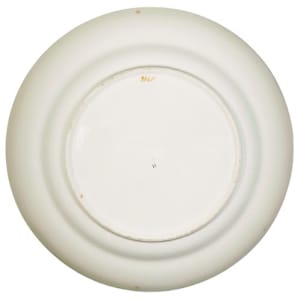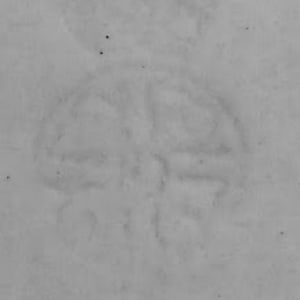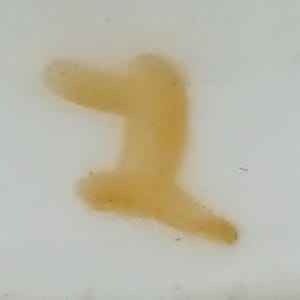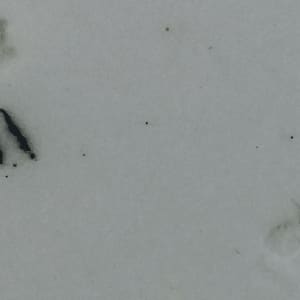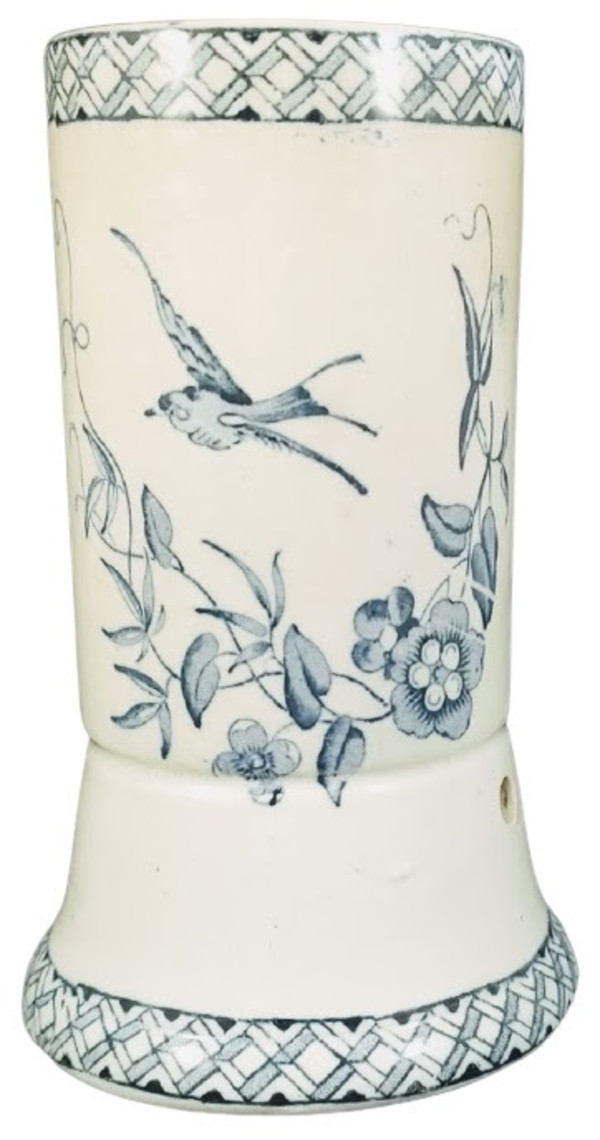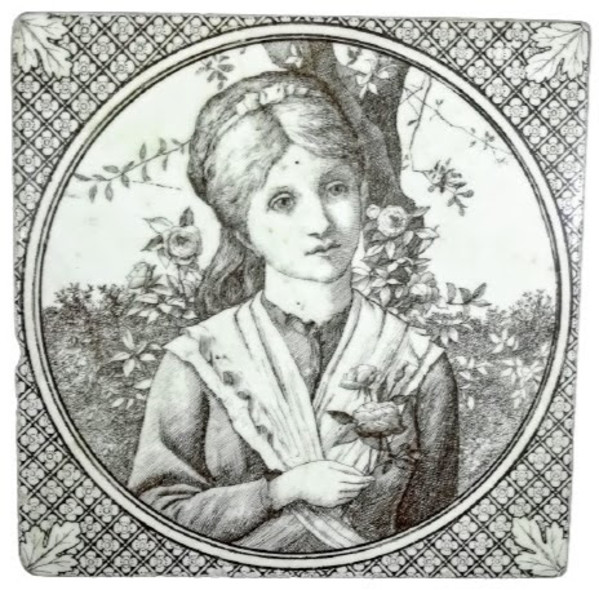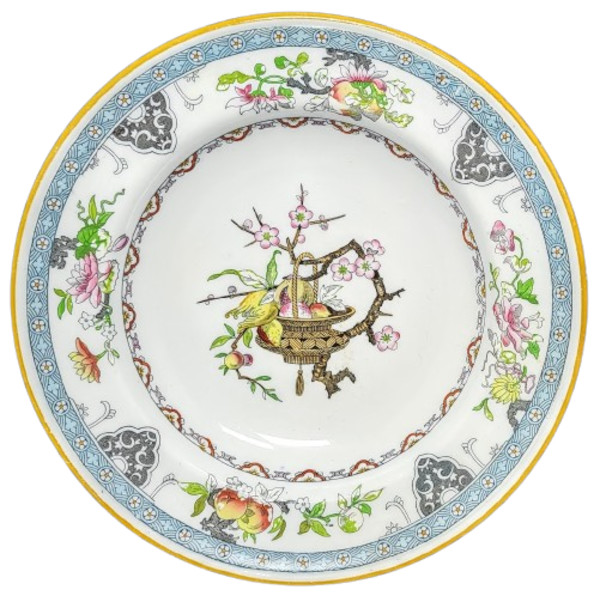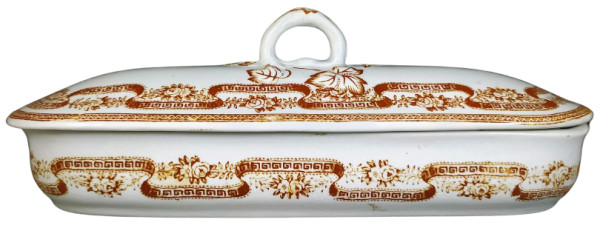- Worcester Royal Porcelain Co.
- Unnamed (Golden Band: Six Fish), c. 1862-1875
- Earthenware
- 10 x 10 in (25.4 x 25.4 cm)
-
Not For Sale
Plate, 10 inches diameter. Black transfer with polychrome clobbering. Impressed maker's mark for the Worcester Royal Porcelain Co. Ltd. (also known as Royal Worcester). The pattern consists of five separate fish with irregular, narrow bands. The fish are widely spaced and have no coordinated linework from one to the next. There are four motifs with one fish, and one with two fish. Similar bands would read as clouds in East Asian art, but here they were probably meant as waves. The border is comprised of seven gilded curves separated by small, solid ovals and was used by the maker for other similarly-styled patterns.
The first production of porcelain in Worcester took place in 1751. An eminent surgeon, Dr John Wall, perfected the secret recipe for the production of soft paste porcelain and a factory was founded on the banks of the river Severn. The river was essential for transporting both production materials and wares. Having gained a reputation for producing quality tableware, Worcester flourished under the guidance of a series of owners. The companies were Chamberlains, Flight Barr, Lockie and Grainger, and Binns Kerr. All made improvements to the manufacture of porcelain, adding new glazes, shapes and designs. The Worcester factory was able to engage the services of excellent artists and some of the finest porcelain was produced there. Royal patronage was added, firstly by king George III in 1789 and has been continually reviewed and renewed with each change of monarch. In 1862 The Royal Worcester porcelain company was formed. The factory continued producing mainly tableware during the nineteenth century and a few figurines were introduced, mostly by James Hadley.
- Subject Matter: Aesthetic (Japonesque)
- Collections: Aesthetic Transferware, Worcester Royal Porcelain Co.

